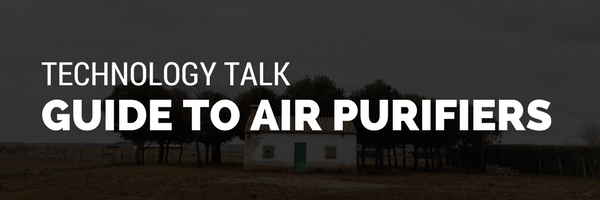Creating an allergen-free space can be difficult but with the right product, your building can circulate clean air all year long.
Before we get into the different types of air purifiers on the market, let’s take a minute to discuss high-efficiency particulate arrestance or HEPA for short. To be classified as HEPA, an air filter must remove 99.97 percent of particles 0.3 microns or larger from your air. The Department of Energy enforces this standard making HEPA air filters the highest standard for allergen and airborne particle removal.
HEPA Purifiers are available in various different types giving you many options to create an allergen-free space. Below you will find a guide on the four main HEPA air purifiers you can choose from brought to you by Tower Equipment Company. This guide will outline which allergens each filter will remove from the air for your convenience.
- True HEPA/UV-C Air Purifiers Remove The Most Allergens- True HEPA/UV-C air purifiers are the best on the market. These air purifiers are typically more expensive than others, but they’re worth it for homeowners or business owners who have family members with bad reactions to allergens or live in high allergen areas. Tip – True HEPA/UV-C air purifiers combine replaceable HEPA air filters with an ultraviolet germicidal light to trap 99.97 percent of airborne allergens and 99 percent of airborne germs and odor-causing bacteria
- True HEPA Air Purifiers – True HEPA air purifiers use replaceable HEPA-rated filters to remove 99.97 percent of the airborne particles in your home. If you or a member of your family has a bad allergy problem, True HEPA is the minimum level of protection you should look for. They rid your home of the pollen, dust mites, and mold spores that are the main causes of seasonal allergies and help keep your home smelling fresh. Tip – Just like your HVAC system’s furnace filters, the HEPA filters in True HEPA and True HEPA/UV-C air purifiers need to be replaced at least every three months.
- HEPA-Type Air Purifiers– These air purifiers are the less-effective cousin of True HEPA air purifiers. If pollen and dust mites aren’t as big of a problem in your home, these more economical air purifiers might be the best for you. The replaceable filters still trap 99 percent of small airborne particles including dust, smoke, and pet dander to help keep the air in your home cleaner, but they do not get rid of smaller particles like pollen and dust mites that may cause allergies.
- Permanent HEPA-Type Air Purifiers Permanent HEPA-Type air purifiers work just like HEPA-Type air purifiers, except they have filters that do not need to be replaced. The reusable filters require occasional cleaning to help trap 99 percent of airborne particles
Other Types of Air Purifiers
Other than HEPA air purifiers, there are plenty of other air purifying options some of which can be incorporated into the choices above. Here are some other air purifying options you can look into for your HVAC system:
- Activated carbon filters– use small, absorbent pores to capture pollutants as they pass through the filter. Since the pores chemically react to the pollutants in the air, activated carbon filters are great at removing odors, chemicals, and smoke from the air, but they do not remove dust and allergens. If you have an odor problem, look for HEPA or HEPA-Type filters with activated carbon to remove odors and purify the air.
- UV Purifiers– remove bacteria and viruses from the air. These ultraviolet germicidal lights kill airborne germs to help keep your family healthy. Like activated carbon filters, they are rarely used alone to purify air and work best when combined with HEPA or HEPA-Type air purifiers.
- Ionic Air Purifiers– don’t actually purify the air. Instead, they send streams of negative ions into the air that attach to airborne particles, making them too heavy to remain airborne. Since most surfaces are positively charged, the negatively charged particles are attracted to the surfaces in the room and settle there. In other words, the particles may be removed from the air, but they’re still stuck in the room.
Interested in an air purifier for your next job? Contact Tower Equipment today for more information, pricing, or with any questions you may have at:


0 Comments Leave a comment